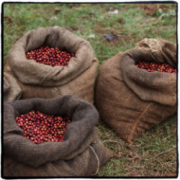The Three Laws of Coffee
1. The quality of water
Do you like the smell of tap water in your house? This is a very serious problem. Maybe you live in a big city where the tap water filtration system is so advanced that the quality of the water you use is even comparable to that of bottled water; maybe you live in the suburbs and the tap water filtration system is old and the tap water always has a strange smell. Unless the tap water you live in is of high quality, you must use a water filtration system when making coffee. Installing a water filtration system may require an additional investment, but it is absolutely guaranteed that your boutique coffee will not contain any negative taste of chlorine or other chemicals.
two。 Gouache ratio
Have you ever used the same coffee machine or drip coffee maker to make the same coffee, but the taste of the coffee is different? This may be due to the different amount of water you use to make coffee each time. Although now
People have different preferences for coffee taste, but according to the guidance of professional coffee machine manufacturers, you should use 9-12 grams of coffee powder and 240 milliliters of water when making espresso.
3. Water temperature
What is the ideal water temperature for brewing coffee? The answer is 92-97 ℃. If you don't have a thermometer, remember that the temperature of the water that is about to boil is 97-99 ℃. At present, many devices on the market have their own constant temperature function, but you still need to double-check to make sure the water temperature is accurate.

Important Notice :
前街咖啡 FrontStreet Coffee has moved to new addredd:
FrontStreet Coffee Address: 315,Donghua East Road,GuangZhou
Tel:020 38364473
- Prev

So how to clean up the coffee machine, the coffee machine, the coffee brewer.
So how do you clean up the coffee maker? First of all, you need to buy a vacuum cleaner. This vacuum cleaner is not used to clean the floor, but to remove coffee powder from the bean grinder after work every day. Even the best bean grinder leaves some coffee powder inside the machine after a day's work. The oil released by coffee powder will stick to the inside of the machine, affecting the quality of coffee.
- Next

The most commonly used way of packaging coffee packaging coffee raw bean packaging
The most commonly used packaging method: sacks are the most commonly used and economical choice for packing and transporting raw beans, jute is a renewable resource, and sacks are cheap and do not require special skills or equipment beyond the capacity of ordinary mills and export points. However, sacks cannot isolate moisture and odor, so the coffee beans transferred are easily damaged during storage and transportation.
Related
- Beginners will see the "Coffee pull flower" guide!
- What is the difference between ice blog purified milk and ordinary milk coffee?
- Why is the Philippines the largest producer of crops in Liberia?
- For coffee extraction, should the fine powder be retained?
- How does extracted espresso fill pressed powder? How much strength does it take to press the powder?
- How to make jasmine cold extract coffee? Is the jasmine + latte good?
- Will this little toy really make the coffee taste better? How does Lily Drip affect coffee extraction?
- Will the action of slapping the filter cup also affect coffee extraction?
- What's the difference between powder-to-water ratio and powder-to-liquid ratio?
- What is the Ethiopian local species? What does it have to do with Heirloom native species?

